wdolson
Posts: 10398
Joined: 6/28/2006
From: Near Portland, OR
Status: offline

|
Many ahistorical things that can be done in the game are limitations in the game engine. As soon as the Allies had bases close enough to the DEI to bomb the oil facilities there, they started a bombing campaign. The bombing campaign was effective in disrupting the flow of oil, but it didn't stop it. What shut off the flow was the submarine campaign and later air bases in the Philippines.
One problem with this is that you can't do crash repairs of something critical in the game. If it's damaged, it will repair at one point a day if there are enough supply, regardless of how critical it is. The game also makes no distinction between damage and new development. In CHS, the US has a lot of undeveloped oil potential at the beginning of the game represented by damaged oil centers. These come online in a historical manner because the repair pace is about right for developing an oil field.
In most cases, damaged oil facilities in the DEI could historically be brought back online quicker than one point a day. A lot depends on the type of damage, which the game does not depict. Damage from bombers on an oil field is relatively easy to repair (refineries are another matter). Planned demolition of an oil field could be more severe. If the retreating enemy imploded the wells, new ones would have to be drilled, which would take more time that replacing the above ground piping and equipment.
As far as shutting off Australia, the Japanese were quite aware of what extending their reach down through the South Pacific would do. Some of the opponents of the Midway operation pointed out that extending down through the islands of the South Pacific would be a much wiser move than to attempt to establish a base to threaten Hawaii. Yammamoto and some others were fixated on Midway.
darken92 did mention some gamey things some PBEM players have done. Scouting for CVs by putting a transport out there as bait is very ahistorical. That isn't a hindsight thing, that is doing something that nobody would ever do in the real world. It was envisioned at one time that destroyers would be used as scouts and that is how they were used in World War I. Search planes negated that role for DDs. However, if someone wanted to scout with DDs in the game, I would call it borderline gamey, but more reasonable than transports.
The game gets people thinking about how many victory points something costs, but that would not happen in the real world. There are no victory points in a real war.
Massed air strikes are something the game allows that is tough to control. There are a number of reasons for this. Airfields don't have stacking limits. There are penalties for over stacking, but there are no hard limits. If you want to put 600 planes on a size 3 airfield, you can. The only penalties are that operations will be less efficient (which most players won't notice) and if the enemy attacks, there will be carnage. The game also allows you to push all your air assets to the front. In the real world, the Allies had more than half their air units in rear areas patrolling for subs, training, and on R&R.
Units were also withdrawn from combat, some were disbanded, some were sent to places off the map, and some were rebuilt and returned to the theater. In the game, once in the game, always in the game. You get the AVG at the beginning of the war and it's there until 1945. It was disbanded in July 1942 and evolved into the 23rd fighter group (that is also in the stock game). CHS eliminated the 23rd FG, but in stock you have both.
Many units were disbanded entirely. VF-17 was only operational in the Solomons for a couple of months. The unit was then sent home and disbanded entirely. The squadron number was then reused for a carrier fighter squadron later in the war. The second incarnation of VF-17 had nothing in common with the 1st version. Not a single member of the original squadron was in the new squadron and the new squadron flew F6Fs.
The game also doesn't penalize you for stripping the West Coast of planes. In the real world, most units in that region were training units in the final stages of training. They were no fit for combat. They also were there to give the pubic a warm and fuzzy feeling that they were protected. (My father said he remembered seeing P-38s flying over LA before he went into the USAAF and feeling that the air force was doing its bit to protect the coast, but after he was in he realized that the guys he saw flying over the city probably would have been in deep trouble if the Japanese had attacked. ) If a field commander had tried to grab those units, the political fallout would have gone all the way to the Joint Chiefs.
It would be possible to fix some of these in code, but it would be a major change in most cases. I think these things would be a WitP II thing, if ever done.
Bill
_____________________________
WitP AE - Test team lead, programmer  |
 Printable Version
Printable Version









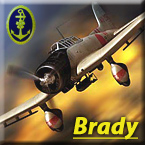


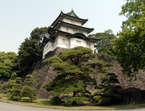

 . I know I'd get plenty p1ssed if my opponant bailed in 43 (winning or loseing).
. I know I'd get plenty p1ssed if my opponant bailed in 43 (winning or loseing).




 At the same point I have to wonder. Are gamers who do those things you dispise, simply be smarter than the actual Admirals? I've often heard it said that todays Marine Corporal is smarter that most Civil wars generals....could nearly seventy years make a difference? Or perhaps a different (though I loath to use the word) paradigm?
At the same point I have to wonder. Are gamers who do those things you dispise, simply be smarter than the actual Admirals? I've often heard it said that todays Marine Corporal is smarter that most Civil wars generals....could nearly seventy years make a difference? Or perhaps a different (though I loath to use the word) paradigm?
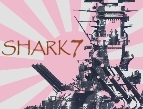



 And why do you think I loath the word so much? You forgot the worst phrase of all "thinking outside the box". Every time I hear that phrase , I want to put the speaker of it into a pine box.
And why do you think I loath the word so much? You forgot the worst phrase of all "thinking outside the box". Every time I hear that phrase , I want to put the speaker of it into a pine box. 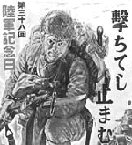
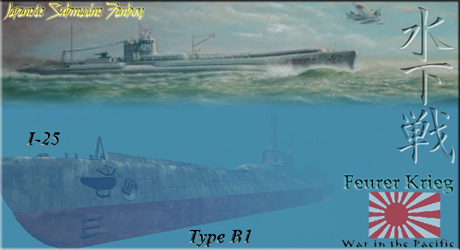

 New Messages
New Messages No New Messages
No New Messages Hot Topic w/ New Messages
Hot Topic w/ New Messages Hot Topic w/o New Messages
Hot Topic w/o New Messages Locked w/ New Messages
Locked w/ New Messages Locked w/o New Messages
Locked w/o New Messages Post New Thread
Post New Thread